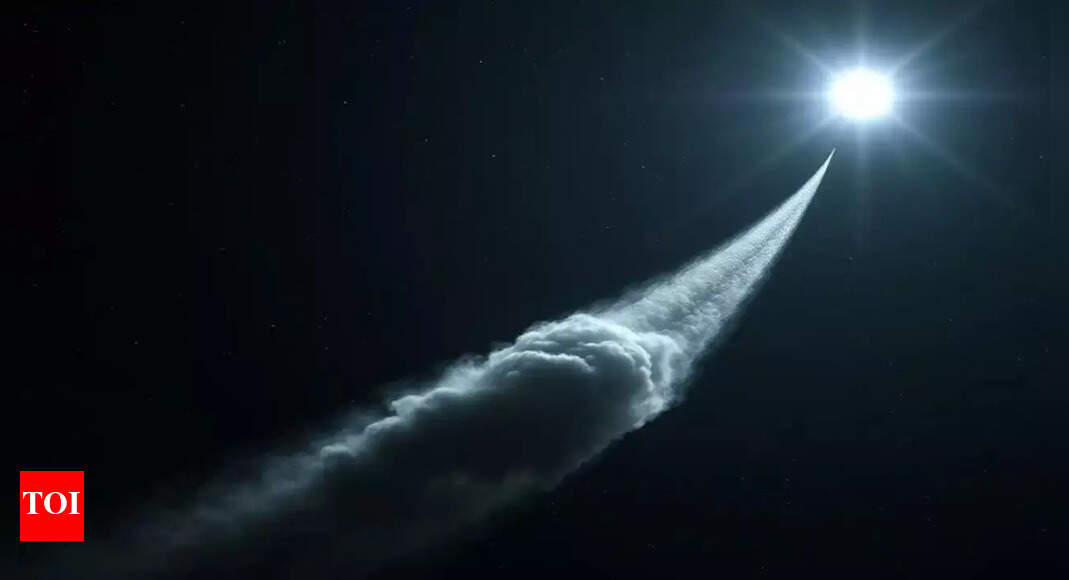
In a rare cosmic discovery, scientists have detected an interstellar comet, 3I/ATLAS, releasing water vapor while still far from the Sun, a phenomenon that has left astronomers astonished. Using NASA’s Neil Gehrels Swift Observatory, researchers identified ultraviolet signatures of hydroxyl (OH), a byproduct of water molecules broken apart by sunlight. What makes this extraordinary is that 3I/ATLAS was nearly three times farther from the Sun than Earth when it began spewing water, a region typically too cold for ice to sublimate. NASA researchers say this level of activity is unlike anything ever recorded from an interstellar object.
3I/ATLAS: An interstellar visitor with a watery secret
3I/ATLAS is only the third confirmed interstellar object to pass through our solar system, following ‘Oumuamua in 2017 and comet Borisov in 2019. Unlike those predecessors, ATLAS has shown intense water activity, with scientists estimating it was emitting around 40 kilograms of water every second, roughly 1.36 × 10²⁷ molecules per second. Astonishingly, at least 8% of its surface appears to be active, compared to the 3–5% seen in typical comets. This suggests the presence of easily accessible ice or dust grains being ejected and vaporizing in sunlight.At the comet’s observed distance, temperatures are far too low for solid ice to vaporize directly. Scientists believe that 3I/ATLAS releases microscopic ice grains that are thrown into space, where they gradually warm and sublimate, producing the water vapor detected. This mechanism, essentially a two-step outgassing process, is extremely rare and provides insight into how volatile materials behave in the cold outer reaches of a star system. Such distant water release challenges long-held assumptions about the physics and chemistry of comets.
Clues to life’s building blocks
The discovery carries profound implications for understanding how the ingredients for life may travel across the galaxy. Interstellar comets like ATLAS could serve as cosmic delivery systems, transporting water and organic molecules between planetary systems. By studying their composition, scientists can trace how these life-supporting compounds form and move through interstellar space, possibly explaining how early Earth received its water and organic matter.Spectral analysis reveals that 3I/ATLAS is rich in water but poor in cyanogen (CN), a signature of formation in a carbon-deficient region, perhaps near a young, metal-poor star. This makes it chemically distinct from its interstellar predecessors: ‘Oumuamua, which was dry and rocky, and Borisov, which was rich in carbon monoxide. Such differences highlight the diversity of planetary materials formed around other stars and show that our solar system’s chemistry may be just one of many possibilities in the galaxy.
A glimpse into galactic evolution
Lead researcher Zexi Xing and the team behind the discovery emphasize that each interstellar visitor reshapes our understanding of how planetary systems evolve. “Every interstellar comet we study tells a different story,” Xing explained, noting that ATLAS’s distant water activity could rewrite existing cometary models. These findings strengthen the theory that interstellar objects carry crucial clues about the processes that shape worlds far beyond our own and perhaps, the origins of life itself.







